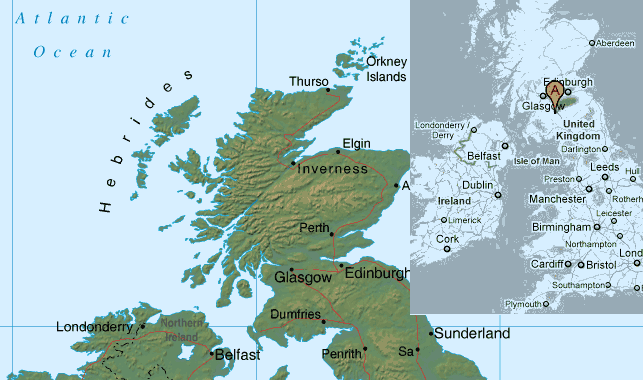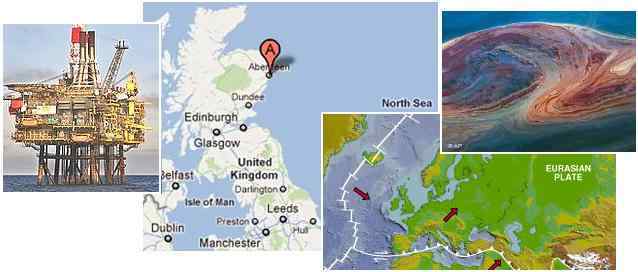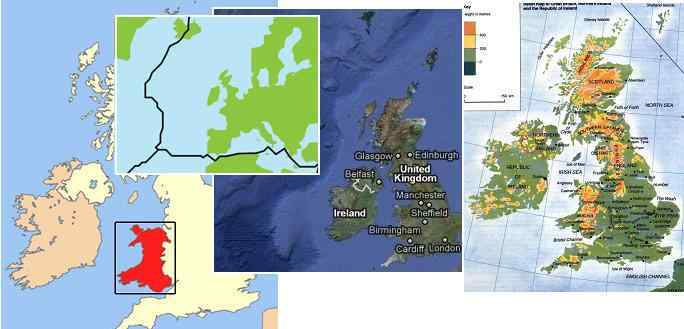
| |
 |
![]()
Ireland, as Scotland, will be dragged down during the land stretch that precedes the pole shift, when the Atlantic is put under tension before the Atlantic Rift splits further. As this first occurs when the waters have moved toward the poles, during the rotation stoppage, the degree to which the land has dropped will not at first be apparent. Then, during the shift itself, when the water that has flowed to the poles returns to the new equator and sloshes about, the impact of tidal waves will be worse than expected. After the Atlantic Rift has widened, the shore lines, already below their former level, will have less structure to hold them up as they are fringed along the rift edge, and will drop below the waves for that reason. All in all, Ireland will drown, and those wishing to survive are advised to seek safety inland on the mainland of Europe, by boat, when rotation stops.
ZetaTalk ™
Since the brunt of the 200-300 foot high European tsunami will hit western England, with only about 100 feet roaring through the English Channel, what will the effect be on Ireland, Scotland, and Wales? The Irish Sea can expect a strong tsunami also, an estimated 150 feet high and pushing strong. All land directly on the coastline and all land that can be inundated up river or into lowlands will be affected. We have suggested that those who anticipate being affected by the tsunami prorate our guidelines for the pole shift sloshing as a guide to where the tsunami might reach. If one must be 100 miles inland and 200 feet up for a 500-600 foot high tide, then for a 150 foot tsunami, assume one-third of this. Given the narrow islands, being 100 miles from shore is hardly possible, so one must assume being 150 feet high at a minimum, and taking into consideration tidal bore up ravines or rivers, 250 feet would be advised. Such elevation exists in Ireland, Scotland, and Wales but the major cities are in lowlands and will have scant warning before the tsunami hits. Ships at sea, giving warning of the approach, are the best bet for an early warning, and such alert ship captains should be on the lookout from the time of the great New Madrid quake, as this will occur within hours of that quake.
ZetaTalk ™ 2010

The region of the Aberdeen oil leak is neither a plate border nor fault line. But it does lie in the area destined to be pulled down during the plate movements preceding the pole shift and certainly during the pole shift itself. We have predicted that Ireland, Scotland, and Wales will be pulled down to a greater extent than England herself. What happens when plates are bent in this way, pulled down because the plate border in the mid-Atlantic has weakened, a void on one side of this plate border? Rock layers bend, and snap, and certainly destabilize anything like an oil pipeline that expects a smooth firm surface. A pipeline that lacks support will itself fracture, fitting pulling apart, and there you have a leak. More of this will certainly occur.
ZetaTalk ™ August 20, 2011

Just what part of the western UK will be permanently pulled down 150 feet
during the 5.9 days of rotation stoppage is not clear. We have predicted
the UK in general to anticipate a drop
of 75 feet, with Ireland, Scotland and Wales pulled down potentially
by 150 feet, as will the East
Coast of the US. This occurs as the land east of the Atlantic Rift
attempts to pull eastward, wanting to rotate, while the Atlantic Rift is
held firmly in the magnetic grip of Planet X, held back. This stretches
the land masses along the rift, which has already ripped open at the time
of the European tsunami, so the land essentially flattens between the East
Coast of the US and the islands of the UK, or attempts to do so. This
deforming seldom returns to a pre-deforming state, and after the pole
shift even less support along the rift edges exists, so the land is also
drooping for this reason.
Ireland, Scotland, and Wales face the Atlantic Rift more than the east
coast of England, and thus take the brunt of the droop. One can see from
the underwater shelf that lies to the west of these islands that this has
happened before. One could prorate the droop from London, which we
anticipate losing only 25 feet in
elevation due to the pole shift, through to the west coast of
Ireland, which could lose up to 150 feet in elevation. Beyond this we
could not be more accurate. Surviving the pole shift means surviving the
sloshing Atlantic during the pole shift. Surviving in the Aftertime means
determining what land will be above the waves, and establishing ocean
fishing to supply protein to those communities huddled on high points in
what used to be the UK.
ZetaTalk ™ August 27, 2011

Note European Migration
commentary.
Note European Tsunami Source
commentary.
Note European Tsunami
commentary.
Note European Population
commentary.
Note 7 of 10 Pace Slowed commentary.